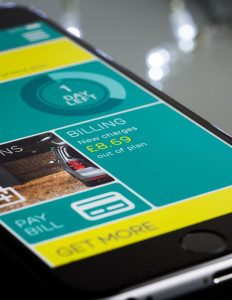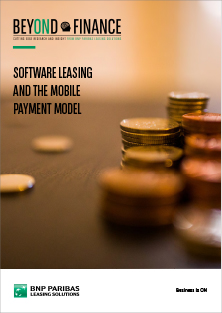You can do far more with your annual budget than you think – if you know where to look.
By Tristan Watkins, CEO, BNP Paribas Leasing Solutions UK
Mobile phone networks tend to have excellent rates of customer retention: at EE, the average is over four years, at Vodafone, the average is over six. These carriers aren’t necessarily successful due to superior service; they’re successful simply because they understand not only what their customers want to purchase, but how they want to purchase it. By offering monthly plans, customers get the handsets they want at prices they can afford.
Similarly, every company wants to acquire the technology it needs without putting undue pressure on its budget. Given the mobile model’s success, it’s surprising that it’s not more widespread elsewhere; in many respects, it’s an ideal way to pay for business software.
Here are four reasons why.
-
1. Greater value for money
Buying a smartphone with a contract offers superior value for money. For example, individually, the more expensive iPhones cost around £700; for that princely sum, the customer gets a handset, a one-year warranty, and nothing more – no data, no calls, no text messages. They’ll need to either opt for “pay as you go” (PAYG) or add the costs of an additional contract on top of the purchase price.
When the same phone is leased for, say, £49.99 a month on a 24 month contract, the customer gets a lot more bang for their buck. Not only will they get a top-of-the-range handset, they’ll also get calls, texts, and an allowance of mobile data.
So why don’t more businesses obtain their software in a similar manner?
If your company is particularly budget-conscious – and most mid-market companies aren’t cash-rich – a large, one-off transaction can be unjustifiably expensive.
By paying predictable fees over the course of an agreed period (usually three to five years), you can do more with your annual budget, and get more for your money. For example; on a monthly lease you get the software your business needs, and you can also get training and set-up fees included for a manageable monthly cost.
-
2. Regular upgrades
When discussing cost, it’s also important to discuss value; when you purchase software, not only are you spending a lot of money, you’re spending it on something with built-in obsolescence. A 2011 iPhone 4S – £500 on release – will only fetch £51 today. Because nobody likes sinking a lot of money into something that will quickly become out-dated, mobile networks allow for upgrades after a certain period of time. As they aren’t saddled with an obsolete device, their customers are more inclined to renew their contracts.
Why shouldn’t it also be possible to tether upgrades and updates to software renewals?
When you buy an application, you buy a specific version of that application: you could pay up to £600 for a 2016 edition of some all-in-one accounting software, but that’s the one you may be stuck with when they roll out later editions. If you acquire licences in the way you lease your phone, you’ll always be able to use the latest – and best – products on the market.
-
3. Accommodating your needs
Some customers with mobile phone contracts habitually run out of data. Maybe they check emails too frequently, maybe they overindulged their Netflix addiction on the commute (it adds up!); whatever the reason, it’s easy for them use up an allowance long before the end of the month – and if they still need the internet, it’s a particular hassle.
In these circumstances, there are two options:
Option one
Buy more data; an extra gigabyte could cost around £7, so this isn’t the most cost-effective solution.
Option two
Enhance the plan: it may be possible to use that same £7 to upgrade to a better contract with an additional 5GB per month.
When a company grows, it may find that the products and services it was using are no longer fit for purpose. For example, you might need a larger network of printers fit for enterprise-level operations, or bandwidth that easily accommodated 200 people buckles under the strain of 250.
Under these conditions, the mobile networks again offer the best framework: using a leasing model, it’s simple and convenient to adjust contracts to suit your company’s needs. Any difference between flexing your software to scale and adding an extra printer is a matter of perception rather than reality: there’s no meaningful difference.
You may not know it’s an option, but leasing more comprehensive packages to fit changing business requirements is usually significantly easier on your company ledger.
4. Tailored plans
Mobile networks offer a massive variety of plans. If customers need vast quantities of data or unlimited texts, they’re set; if they have to make international calls on a regular basis, there’ll be some way to accommodate this need. Whatever it is, there’s almost certainly a plan to accommodate it, and if there isn’t, it’s usually just a matter of asking.
This is another area where conventional means of payment falter. At a certain level, software isn’t always easy to integrate into existing systems and processes. For example, almost all enterprise-level deployments require training, consultancy, assistance with setup, and hardware. If software’s procured via a leasing arrangement, the contract can be written to cover all additional add-ons and allow a hassle-free experience.
If the model used by mobile phone networks becomes more widely used, it will democratise software and give businesses better access to the tools that will help them grow – thereby helping to finance the real economy. The desire to have the best technology on the market and the desire to manage cashflow effectively have historically chafed against each other. With the right funding, it’s possible to satisfy both needs.You can do far more with your annual budget than you think – if you know where to look.






